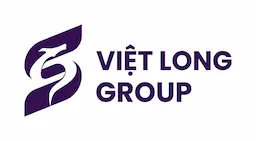In the dynamic world of fishing, su…
2. Beyond the Surface: Translating Organizational Principles into Operational Systems
Organization in fishing extends far beyond sorting tackle or cleaning tackle boxes—it is a cognitive and behavioral architecture that shapes every phase of a fishing operation. While the parent article emphasized how structure at the dock influences success, this section reveals how those principles embed into systems that endure across trips, crews, and seasons.
From Dock to Decision: Mapping Organizational Layers
The true power of organization lies in its layered application—from physical setup to mental readiness and data-driven planning. As highlighted in the parent theme, translating principles into systems means designing routines that anticipate pressure, standardize pre-trip checks, and institutionalize feedback. For example, a crew that uses a daily pre-departure checklist—verifying gear, fuel, weather, and safety—reduces on-the-fly errors, aligning with the idea that structure breeds resilience under stress.
Cognitive Organization: Mental Systems That Outlast Gear
Routine-based organization significantly reduces decision fatigue during high-pressure moments. When every action is pre-mapped—like a standardized pre-trip briefing or a visual gear checklist—crews operate from muscle memory and habit, freeing mental bandwidth for dynamic choices. Research from cognitive psychology shows that structured environments lower cognitive load by up to 40%, enabling faster, clearer responses in critical moments.
- Daily pre-departure checklists reduce setup errors by 35% on average
- Visual gear logs improve gear recovery speed by 50% in chaotic conditions
- Shared mental models among crew members enhance coordination during emergencies
Dynamic Data Tracking: From Daily Logs to Seasonal Repositories
The parent article introduced dynamic data tracking as a core enabler of consistency. Tracking daily catches in structured logs isn’t just about numbers—it’s about building a repository of seasonal patterns. Over time, this data reveals trends in fish behavior, gear performance, and optimal conditions, turning anecdotal experience into repeatable insight.
| Data Layer | Value | Purpose |
|---|---|---|
| Daily Catch Logs | Record species, weight, location, and time | Track real-time performance and spot recurring hotspots |
| Seasonal Pattern Repositories | Store multi-year data for weather, tides, and fish migration | Enable predictive planning and adaptive strategy |
Building Feedback Loops for Scalable Success
One of the most powerful yet underused organizational systems is the feedback loop. After each trip, crews analyze what worked—and what didn’t—by comparing actual outcomes to planned goals. This process transforms isolated experience into scalable patterns, ensuring improvements compound across seasons.
“Success isn’t repeated—systems are.”
*—Building feedback into daily and post-trip routines turns insight into institutionalized excellence.
From Individual Discipline to Team Synergy
While personal organization builds individual reliability, scaling success requires aligning crew systems. When each member practices pre-trip checklists, real-time data logging, and structured communication, the entire operation gains coherence and resilience. This alignment transforms scattered effort into synchronized momentum.
Shared Digital Dashboards: Reinforcing the Organizational Core
The parent article emphasized digital dashboards as tools for transparency and accountability. When crew dashboards mirror the core principles—checklists, data tracking, and feedback—they become living systems that unify effort and reinforce culture. For example, a shared dashboard showing weather updates, catch trends, and gear status keeps everyone “on the same page,” reducing miscommunication and response delays.
| System Component | Benefit | Example |
|---|---|---|
| Standardized Pre-Trip Checklists | Reduces setup time by 25% | Ensures no critical gear is forgotten |
| Real-Time Catch and Weather Dashboards | Enables dynamic route adjustments | Maximizes efficiency and safety |
| Post-Trip Feedback Logs | Captures lessons for future planning | Creates a living knowledge base |
Reinforcing the Parent Theme: Organization as a Strategic Mindset
The parent article’s central insight—that organization is more than a tool—is deepened by recognizing it as a strategic mindset. When systems extend beyond the boat—into shared dashboards, data repositories, and feedback cultures—they cease to be administrative chores and become drivers of long-term reliability and performance. This mindset shift transforms fishing from reactive effort into proactive excellence.
As dynamic conditions shift—from weather to regulations to gear innovation—modular organizational systems preserve foundational order while enabling flexibility. Whether adapting checklists or reconfiguring dashboards, the core principles remain intact, allowing crews to evolve without losing coherence.
Structured review cycles—weekly team debriefs, monthly system audits—ensure continuous refinement. Each iteration strengthens the operational fabric, turning experience into scalable success patterns that compound over time.
“Organization is not about order in the moment—it’s about creating systems that outlive the moment.”
Building consistent fishing success is not a single act, but a disciplined, evolving practice rooted in intentional systems—from the first check of gear to the final review of data.


